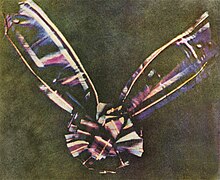Concepts of Computer Graphics/Output Space/Images
The first thing we'd like to understand is what a digital image "is." This work being primarily concerned with the generation of digital images (and computers being digital, we have no other alternatives within the field of computer graphics), understanding what those are will be essential to understanding the intuition of many algorithms that follow. Most of those algorithms approach the complexity of computer graphics by working backwards from the final form of the digital image as a way to reduce the scope of the problem.
When you look around the world, light from the world comes into your eyeballs and is focused on an area on the back of your eye which is covered with millions of little cells. These cells are sensitive to various aspects of light, like color and brightness, and react with the light so that a signal is sent to your brain about which cell saw what sort of light, and your brain creates a complete picture from all these constituent pieces of information.

Unsurprisingly, we attempt to capture images by a similar, though man-made process. A film camera acts very much like an eye, in that light is taken in through the lens, and focused on a surface covered with millions of similarly light-sensitive elements. However, these elements are chemically treated grains of film instead of retinal cells. When the light comes into contact with the chemicals on the film, it causes a reaction that changes the structure of those chemicals, and in so doing records the information about what kind of light came through. The film can later be processed to create a print-out that replicates those colors using the information on the film.
A digital camera works very much the same way, except that instead of placing a chemically-treated strip of film behind the lens, an array of light-sensitive semiconductors is used instead. These elements convert the information about the light they interact with into numbers encoded to represent light. Thus, we can consider a digital image to be a set of data which provides information about the light used to create a particular image.
In fact, since a digital image is really just a collection of numbers, the concept exists outside the realm of photography as well; we could in theory consider any stream of numbers, properly formatted and in digital form, to be a digital image. The key technique of computer science is that of creating such a dataset purposely, element-by-element, without the use of any photographic equipment or actual light of any sort to base the image on.